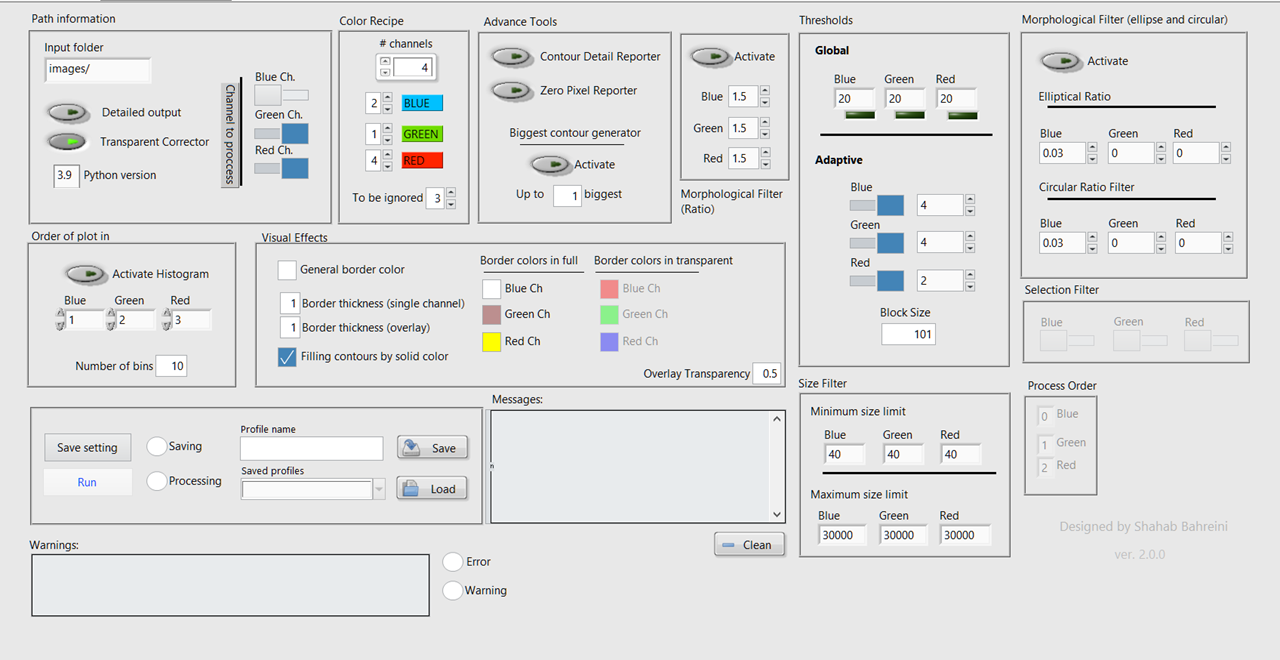Automated Glomeruli Quantification
This project aims to develop an application that analyzes mouse brain images and identifies regions called “glomeruli” in accessory olfactory bulbs (AOB). The goal is to find an alternative way to manually identify these regions and to determine their properties, such as size, color composition, and number per AOB image section. Manually recognizing and quantifying glomeruli on digital images is a time-consuming task. Therefore, we have developed an open-source script written in Python, which is available on the GitHub webpage. GitHubwebpage.
Glomeruli are neuropil-rich regions of the main or accessory olfactory bulbs (AOB), where the axons of olfactory or vomeronasal neurons and dendrites of mitral/tufted cells form synaptic connections. Studies show that the size and number of AOB glomeruli can be analyzed to distinguish control and specific types of gene mutated mice by these quantities (Prince et al. 2013; Brignall and Cloutier 2015). These studies show that the average glomeruli size is much bigger, and the glomeruli size is much smaller in the posterior accessory olfactory bulbs (pAOB) of the mutant compared to the control type. The goal of our program is to find these distinctions by analyzing glomeruli automatically.
To introduce the program briefly, it imports PNG, TIFF, and most of the lossless image formats and scans whole channels to find glomeruli and analyze their desired properties using the OpenCV library. Glomeruli are recognized as the external contours after thresholding the input image by the “Gaussian Adaptive” method. Below is an example of program output compared to manual selection by a human.

Automatically identified glomeruli. White borders indicate the found glomeruli.

Manually identified glomeruli. White borders indicate the found glomeruli.
A graphical user interface (GUI) is also written in LabVIEW programming to interact with the Python script. This interface can be compiled for MAC, Windows, and Linux operating systems. Below is a screenshot of the design GUI.

Quantitative comparison of manual vs. the program’s output demonstrates the ability to distinguish a control from a mutant by comparing their AOB’s glomeruli size and numbers.

Automated identifying glomeruli. White borders indicate found glomeruli.

Manual identifying glomeruli. White borders indicate found glomeruli.
Description
A Python project to analyse stacked brain images and find AOB glomeruli.
Published: Sep 2021
Language: Python
Source Code: GitHub
Download Paper: Journal Page
